Latest recommendations
| Id | Title * | Authors * | Abstract * | Picture * | Thematic fields * | Recommender | Reviewers | Submission date | |
|---|---|---|---|---|---|---|---|---|---|
08 Apr 2024
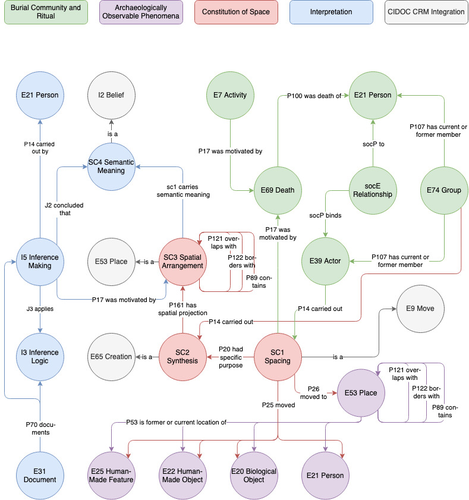
Spaces of funeral meaning. Modelling socio-spatial relations in burial contextsAline Deicke https://doi.org/10.5281/zenodo.8310170A new approach to a data ontology for the qualitative assessment of funerary spacesRecommended by Asuman Lätzer-Lasar based on reviews by 2 anonymous reviewers based on reviews by 2 anonymous reviewers
The paper by Aline Deicke [1] is very readable, and it succeeds in presenting a still unnoticed topic in a well-structured way. It addresses the topic of “how to model social-spatial relations in antiquity”, as the title concisely implies, and makes important and interesting points about their interrelationship by drawing on latest theories of sociologists such as Martina Löw combined with digital tools, such as the CIDOC CRM-modeling. The author provides an introductory insight into the research history of funerary archaeology and addresses the problematic issue of not having investigated fully the placement of entities of the grave inventory. So far, the focus of the analysis has been on the composition of the assemblage and not on the positioning within this space-and time-limited context. However, the positioning of the various entities within the burial context also reveals information about the objects themselves, their value and function, as well as about the world view and intentions of the living and dead people involved in the burial. To obtain this form of qualitative data, the author suggests modeling knowledge networks using the CIDOC CRM. The method allows to integrate the spatial turn combined with aspects of the actor-network-theory. The theoretical backbone of the contribution is the fundamental scholarship of Martina Löw’s “Raumsoziologie” (sociology of space), especially two categories of action namely placing and spacing (SC1). The distinction between the two types of action enables an interpretative process that aims for the detection of meaningfulness behind the creation process (deposition process) and the establishment of spatial arrangement (find context). To illustrate with a case study, the author discusses elite burial sites from the Late Urnfield Period covering a region north of the Alps that stretches from the East of France to the entrance of the Carpathian Basin. With the integration of very basic spatial relations, such as “next to”, “above”, “under” and qualitative differentiations, for instance between iron and bronze knives, the author detects specific patterns of relations: bronze knives for food preparing (ritual activities at the burial site), iron knives associated with the body (personal accoutrement). The complexity of the knowledge engineering requires the gathering of several CIDOC CRM extensions, such as CRMgeo, CRMarchaeo, CRMba, CRMinf and finally CRMsoc, the author rightfully suggests. In the end, the author outlines a path that can be used to create this kind of data model as the basis for a graph database, which then enables a further analysis of relationships between the entities in a next step. Since this is only a preliminary outlook, no corrections or alterations are needed. The article is an important step in advancing digital archaeology for qualitative research. References [1] Deicke, A. (2024). Spaces of funeral meaning. Modelling socio-spatial relations in burial contexts. Zenodo, 8310170, ver. 4 peer-reviewed and recommended by Peer Community in Archaeology. https://doi.org/10.5281/zenodo.8310170 | Spaces of funeral meaning. Modelling socio-spatial relations in burial contexts | Aline Deicke | <p>Burials have long been one of the most important sources of archaeology, especially when studying past social practices and structure. Unlike archaeological finds from settlements, objects from graves can be assumed to have been placed there fo... |  | Computational archaeology, Protohistory, Spatial analysis, Theoretical archaeology | Asuman Lätzer-Lasar | 2023-09-01 23:15:41 | View | |
02 Apr 2024

Similarity Network Fusion: Understanding Patterns and their Spatial Significance in Archaeological DatasetsTimo Geitlinger https://doi.org/10.5281/zenodo.7998239A different approach to similarity networks in Archaeology - Similarity Network FusionRecommended by Joel Santos based on reviews by Matthew Peeples and 1 anonymous reviewerThis is a fascinating paper for anyone interested in network analysis or the chronology and cultures of the case study, namely the Late prehistoric burial sites in Dorset, for which the author’s approach allowed a new perspective over an already deeply studied area [1]. This paper's implementation of Similarity Network Fusion (SNF) is noteworthy. This method is typically utilized within genetic research but has yet to be employed in Archaeology. SNF has the potential to benefit Archaeology due to its unique capabilities and approach significantly. The author exhibits a deep and thorough understanding of previous investigations concerning material and similarity networks while emphasizing the innovative nature of this particular study. The SNF approach intends to improve a lack of the most used (in Archaeology) similarity coefficient, the Brainerd-Robinson, in certain situations, mainly in heterogenous and noisy datasets containing a small number of samples but a large number of measurements, scale differences, and collection biases, among other things. The SNF technique, demonstrated in the case study, effectively incorporates various similarity networks derived from different datatypes into one network. As shown during the Dorset case study, the SNF application has a great application in archaeology, even in already available data, allowing us to go further and bring new visions to the existing interpretations. As stated by the author, SNF shows its potential for other applications and fields in archaeology coping with similar datasets, such as archaeobotany or archaeozoology, and seems to complement different multivariate statistical approaches, such as correspondence or cluster analysis. This paper has been subject to two excellent revisions, which the author mostly accepted. One of the revisions was more technical, improving the article in the metadata part, data availability and clarification, etc. Although the second revision was more conceptual and gave some excellent technical inputs, it focused more on complementary aspects that will allow the paper to reach a wider audience. I vividly recommend its publication. References [1] Geitlinger, T. (2024). Similarity Network Fusion: Understanding Patterns and their Spatial Significance in Archaeological Datasets. Zenodo, 7998239, ver. 3 peer-reviewed and recommended by Peer Community in Archaeology. https://doi.org/10.5281/zenodo.7998239
| Similarity Network Fusion: Understanding Patterns and their Spatial Significance in Archaeological Datasets | Timo Geitlinger | <p>Since its earliest application in the 1970s, network analysis has become increasingly popular in both theoretical and GIS-based archaeology. Yet, applications of material networks remained relatively restricted. This paper describes a specific ... |  | Computational archaeology, Protohistory | Joel Santos | 2023-06-02 16:51:19 | View | |
02 Apr 2024
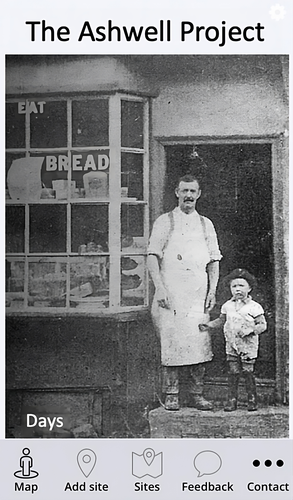
The Ashwell Project: Creating an Online Geospatial CommunityAlphaeus Lien-Talks https://doi.org/10.5281/zenodo.8307882A nice project looking at under-represented demographicRecommended by Alexis Pantos based on reviews by Catriona Cooper and Steinar Kristensen based on reviews by Catriona Cooper and Steinar Kristensen
The paper by A. Lien-Talks [1] presents a small project looking at the use of crowd sourced data collection and particpatory GIS. In particular it looks at the potential of these tools in response to socially disruptive and isolating events such as the COVID-19 pandemic as well as the potential role of digitially mediated heritage initiatives in tackling some of the challenges of changing demographics and life styles. The types of technologies employed are relatively mature, the project identifies potential for such approaches to be used within the local-history/local community settings, though is also a reminer that depsite the much broader adoption of technology within all areas of society than even a few years ago many barriers still remain. While the the sample size and data collected in the project is relatively modest, the focus on empathy toward the intended audiences from the design process, as well as some of the qualitative feedback reported serve as a reminder that participatory, or crowd-sourced data collection initiatives in heritage can, and perhaps should place potential social benefit before data-acquisition of objectives. The project also presents a demographic that is not often represented within the literature and the publication and as such the publication of the article represents a meaningful contribution to ongoing discussions of the role heritage and digitally mediated community archaeology can play a role in developing our societies. References [1] Lien-Talks, A. (2024). The Ashwell Project: Creating an Online Geospatial Community. Zenodo, 8307882, ver. 4 peer-reviewed and recommended by Peer Community in Archaeology. https://doi.org/10.5281/zenodo.8307882 | The Ashwell Project: Creating an Online Geospatial Community | Alphaeus Lien-Talks | <p>Background:<br>As the world becomes increasingly digital, so too must the way in which archaeologists engage with the public. This was particularly important during the COVID-19 pandemic, and many outreach and engagement efforts began to move o... |  | Computational archaeology | Alexis Pantos | 2023-09-01 11:25:54 | View | |
26 Mar 2024
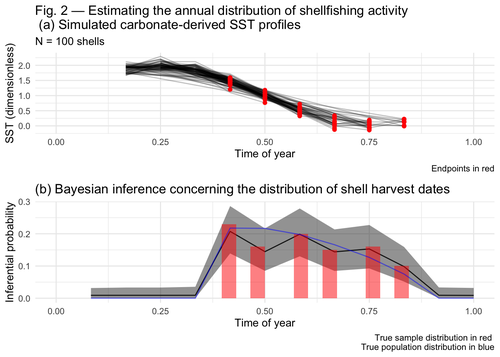
Inferring shellfishing seasonality from the isotopic composition of biogenic carbonate: A Bayesian approachJordan Brown and Gabriel Lewis https://doi.org/10.5281/zenodo.7949547Mixture models and seasonal mobilityRecommended by Alfredo Cortell-Nicolau and Simon Carrignon based on reviews by Iza Romanowska and 1 anonymous reviewerThe paper by Brown & Lewis [1] presents an approach to measure seasonal mobility and subsistence practices. In order to do so, the paper proposes a Bayesian mixture model to estimate the annual distribution of shellfish harvesting activity. Following the recommendations of the two reviewers, the paper presents a clear and innovative method to assess seasonal mobility for prehistoric groups, although it could benefit from additional references regarding isotopic literature. While the adequacy of isotope analysis for estimating mobility patterns in Archaeology has been extensively proven by now, work on specific seasonal mobility is not that much abundant. However, this is a key issue, since seasonal mobility is one of the main social components defining the differences between groups both considering farming vs hunting and gathering or even among hunter-gatherer groups themselves. In this regard, the paper brings a valuable methodological resources that can be used for further research in this issue. One of its greatest values is the fact that it can quantify the uncertainty present in previous isotope studies in seasonal mobility. As stated by the authors, the model can still undergo several optimisation aspects, but as it stands, it is already providing a valuable asset regarding the quantification of uncertainy in the isotopic studies of seasonal mobility. Reference [1] Brown, J. and Lewis, G. (2024). Inferring shellfishing seasonality from the isotopic composition of biogenic carbonate: A Bayesian approach. Zenodo, 7949547, ver. 3 peer-reviewed and recommended by Peer Community in Archaeology. https://doi.org/10.5281/zenodo.7949547 | Inferring shellfishing seasonality from the isotopic composition of biogenic carbonate: A Bayesian approach | Jordan Brown and Gabriel Lewis | <p>The problem of accurately and reliably estimating the annual distribution of seasonally-varying human settlement and subsistence practices is a classic concern among archaeologists, which has only become more relevant with the increasing import... |  | Archaeometry, Computational archaeology, Environmental archaeology, North America, Palaeontology, Paleoenvironment, Zooarchaeology | Alfredo Cortell-Nicolau | Iza Romanowska, Eduardo Herrera Malatesta, Alejandro Sierra Sainz-Aja, Sam Leggett, Christianne Fernee, Anonymous, Asier García-Escárzaga , Paul Szpak , Maria Elena Castiello , Jasmine Lundy , Tansy Branscombe | 2023-10-03 04:45:54 | View |
26 Mar 2024
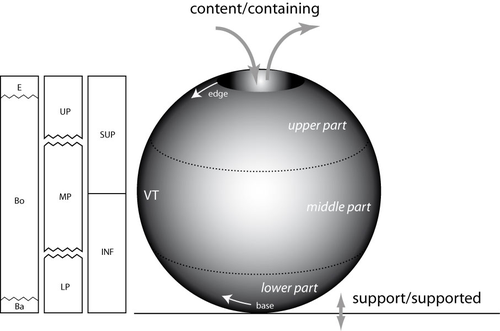
What is a form? On the classification of archaeological pottery.Philippe Boissinot https://doi.org/10.5281/zenodo.10718433Abstract and Concrete – Querying the Metaphysics and Geometry of Pottery ClassificationRecommended by Shumon Tobias Hussain , Felix Riede and Sébastien Plutniak , Felix Riede and Sébastien Plutniak based on reviews by 2 anonymous reviewers based on reviews by 2 anonymous reviewers
“What is a form? On the classification of archaeological pottery” by P. Boissinot (1) is a timely contribution to broader theoretical reflections on classification and ordering practices in archaeology, including type-construction and justification. Boissinot rightly reminds us that engagement with the type concept always touches upon the uneasy relationship between the abstract and the concrete, alternatively cast as the ongoing struggle in knowledge production between idealization and particularization. Types are always abstract and as such both ‘more’ and ‘less’ than the concrete objects they refer to. They are ‘more’ because they establish a higher-order identity of variously heterogeneous, concrete objects and they are ‘less’ because they necessarily reduce the richness of the concrete and often erase it altogether. The confusion that types evoke in archaeology and elsewhere has therefore a lot to do with the fact that types are simply not spatiotemporally distinct particulars. As abstract entities, types so almost automatically re-introduce the question of universalism but they do not decide this question, and Boissinot also tentatively rejects such ambitions. In fact, with Boissinot (1) it may be said that universality is often precisely confused with idealization, which is indispensable to all archaeological ordering practices. Idealization, increasingly recognized as an important epistemic operation in science (2, 3), paradoxically revolves around the deliberate misrepresentation of the empirical systems being studied, with models being the paradigm cases (4). Models can go so far as to assume something strictly false about the phenomena under consideration in order to advance their epistemic goals. In the words of Angela Potochnik (5), ‘the role of idealization in securing understanding distances understanding from truth but […] this understanding nonetheless gives rise to scientific knowledge’. The affinity especially to models may in part explain why types are so controversial and are often outright rejected as ‘real’ or ‘useful’ by those who only recognize the existence of concrete particulars (nominalism). As confederates of the abstract, types thus join the ranks of mathematics and geometry, which the author identifies as prototypical abstract systems. Definitions are also abstract. According to Boissinot (1), they delineate a ‘position of limits’, and the precision and rigorousness they bring comes at the cost of subjectivity. This unites definitions and types, as both can be precise and clear-cut but they can never be strictly singular or without alternative – in order to do so, they must rely on yet another higher-order system of external standards, and so ad infinitum. Boissinot (1) advocates a mathematical and thus by definition abstract approach to archaeological type-thinking in the realm of pottery, as the abstractness of this approach affords relatively rigorous description based on the rules of geometry. Importantly, this choice is not a mysterious a priori rooted in questionable ideas about the supposed superiority of such an approach but rather is the consequence of a careful theoretical exploration of the particularities (domain-specificities) of pottery as a category of human practice and materiality. The abstract thus meets the concrete again: objects of pottery, in sharp contrast to stone artefacts for example, are the product of additive processes. These processes, moreover, depend on the ‘fusion’ of plastic materials and the subsequent fixation of the resulting configuration through firing (processes which, strictly speaking, remove material, such as stretching, appear to be secondary vis-à-vis global shape properties). Because of this overriding ‘fusion’ of pottery, the identification of parts, functional or otherwise, is always problematic and indeterminate to some extent. As products of fusion, parts and wholes represent an integrated unity, and this distinguishes pottery from other technologies, especially machines. The consequence is that the presence or absence of parts and their measurements may not be a privileged locus of type-construction as they are in some biological contexts for example. The identity of pottery objects is then generally bound to their fusion. As a ‘plastic montage’ rather than an assembly of parts, individual parts cannot simply be replaced without threatening the identity of the whole. Although pottery can and must sometimes be repaired, this renders its objects broadly morpho-static (‘restricted plasticity’) rather than morpho-dynamic, which is a condition proper to other material objects such as lithic (use and reworking) and metal artefacts (deformation) but plays out in different ways there. This has a number of important implications, namely that general shape and form properties may be expected to hold much more relevant information than in technological contexts characterized by basal modularity or morpho-dynamics. It is no coincidence that ‘fusion’ is also emphasized by Stephen C. Pepper (6) as a key category of what he calls contextualism. Fusion for Pepper pays dividends to the interpenetration of different parts and relations, and points to a quality of wholes which cannot be reduced any further and integrates the details into a ‘more’. Pepper maintains that ‘fusion, in other words, is an agency of simplification and organization’ – it is the ‘ultimate cosmic determinator of a unit’ (p. 243-244, emphasis added). This provides metaphysical reasons to look at pottery from a whole-centric perspective and to foreground the agency of its materiality. This is precisely what Boissinot (1) does when he, inspired by the great techno-anthropologist François Sigaut (7), gestures towards the fact that elementarily a pot is ‘useful for containing’. He thereby draws attention not to the function of pottery objects but to what pottery as material objects do by means of their material agency: they disclose a purposive tension between content and container, the carrier and carried as well as inclusion and exclusion, which can also be understood as material ‘forces’ exerted upon whatever is to be contained. This, and not an emic reading of past pottery use, leads to basic qualitative distinctions between open and closed vessels following Anna O. Shepard’s (8) three basic pottery categories: unrestricted, restricted, and necked openings. These distinctions are not merely intuitive but attest to the object-specificity of pottery as fused matter. This fused dimension of pottery also leads to a recognition that shapes have geometric properties that emerge from the forced fusion of the plastic material worked, and Boissinot (1) suggests that curvature is the most prominent of such features, which can therefore be used to describe ‘pure’ pottery forms and compare abstract within-pottery differences. A careful mathematical theorization of curvature in the context of pottery technology, following George D. Birkhoff (9), in this way allows to formally distinguish four types of ‘geometric curves’ whose configuration may serve as a basis for archaeological object grouping. The idealization involved in this proposal is not accidental but deliberately instrumental – it reminds us that type-thinking in archaeology cannot escape the abstract. It is notable here that the author does not suggest to simply subject total pottery form to some sort of geometric-morphometric analysis but develops a proposal that foregrounds a limited range of whole-based geometric properties (in contrast to part-based) anchored in general considerations as to the material specificity of pottery as quasi-species of objects. As Boissinot (1) notes himself, this amounts to a ‘naturalization’ of archaeological artefacts and offers somewhat of an alternative (a third way) to the old discussion between disinterested form analysis and functional (and thus often theory-dependent) artefact groupings. He thereby effectively rejects both of these classic positions because the first ignores the particularities of pottery and the real function of artefacts is in most cases archaeologically inaccessible. In this way, some clear distance is established to both ethnoarchaeology and thing studies as a project. Attending to the ‘discipline of things’ proposal by Bjørnar Olsen and others (10, 11), and by drawing on his earlier work (12), Boissinot interestingly notes that archaeology – never dealing with ‘complete societies’ – could only be ‘deficient’. This has mainly to do with the underdetermination of object function by the archaeological record (and the confusion between function and functionality) as outlined by the author. It seems crucial in this context that Boissinot does not simply query ‘What is a thing?’ as other thing-theorists have previously done, but emphatically turns this question into ‘In what way is it not the same as something else?’. He here of course comes close to Olsen’s In Defense of Things insofar as the ‘mode of being’ or the ‘ontology’ of things is centred. What appears different, however, is the emphasis on plurality and within-thing heterogeneity on the level of abstract wholes. With Boissinot, we always have to speak of ontologies and modes of being and those are linked to different kinds of things and their material specificities. Theorizing and idealizing these specificities are considered central tasks and goals of archaeological classification and typology. As such, this position provides an interesting alternative to computational big-data (the-more-the-better) approaches to form and functionally grounded type-thinking, yet it clearly takes side in the debate between empirical and theoretical type-construction as essential object-specific properties in the sense of Boissinot (1) cannot be deduced in a purely data-driven fashion. Boissinot’s proposal to re-think archaeological types from the perspective of different species of archaeological objects and their abstract material specificities is thought-provoking and we cannot stop wondering what fruits such interrogations would bear in relation to other kinds of objects such as lithics, metal artefacts, glass, and so forth. In addition, such meta-groupings are inherently problematic themselves, and they thus re-introduce old challenges as to how to separate the relevant super-wholes, technological genesis being an often-invoked candidate discriminator. The latter may suggest that we cannot but ultimately circle back on the human context of archaeological objects, even if we, for both theoretical and epistemological reasons, wish to embark on strictly object-oriented archaeologies in order to emancipate ourselves from the ‘contamination’ of language and in-built assumptions.
Bibliography 1. Boissinot, P. (2024). What is a form? On the classification of archaeological pottery, Zenodo, 7429330, ver. 4 peer-reviewed and recommended by Peer Community in Archaeology. https://doi.org/10.5281/zenodo.10718433 2. Fletcher, S.C., Palacios, P., Ruetsche, L., Shech, E. (2019). Infinite idealizations in science: an introduction. Synthese 196, 1657–1669. https://doi.org/10.1007/s11229-018-02069-6 3. Potochnik, A. (2017). Idealization and the aims of science (University of Chicago Press). https://doi.org/10.7208/chicago/9780226507194.001.0001 4. J. Winkelmann, J. (2023). On Idealizations and Models in Science Education. Sci & Educ 32, 277–295. https://doi.org/10.1007/s11191-021-00291-2 5. Potochnik, A. (2020). Idealization and Many Aims. Philosophy of Science 87, 933–943. https://doi.org/10.1086/710622 6. Pepper S. C. (1972). World hypotheses: a study in evidence, 7. print (University of California Press). 7. Sigaut, F. (1991). “Un couteau ne sert pas à couper, mais en coupant. Structure, fonctionnement et fonction dans l’analyse des objets” in 25 Ans d’études Technologiques En Préhistoire. Bilan et Perspectives (Association pour la promotion et la diffusion des connaissances archéologiques), pp. 21–34. 8. Shepard, A. O. (1956). Ceramics for the Archeologist (Carnegie Institution of Washington n° 609). 9. Birkhoff G. D. (1933). Aesthetic Measure (Harvard University Press). 10. Olsen, B. (2010). In defense of things: archaeology and the ontology of objects (AltaMira Press). https://doi.org/10.1093/jdh/ept014 11. Olsen, B., Shanks, M., Webmoor, T., Witmore, C. (2012). Archaeology: the discipline of things (University of California Press). https://doi.org/10.1525/9780520954007 12. Boissinot, P. (2011). “Comment sommes-nous déficients ?” in L’archéologie Comme Discipline ? (Le Seuil), pp. 265–308. | What is a form? On the classification of archaeological pottery. | Philippe Boissinot | <p>The main question we want to ask here concerns the application of philosophical considerations on identity about artifacts of a particular kind (pottery). The purpose is the recognition of types and their classification, which are two of the ma... |  | Ceramics, Theoretical archaeology | Shumon Tobias Hussain | 2022-12-13 15:04:45 | View | |
20 Mar 2024
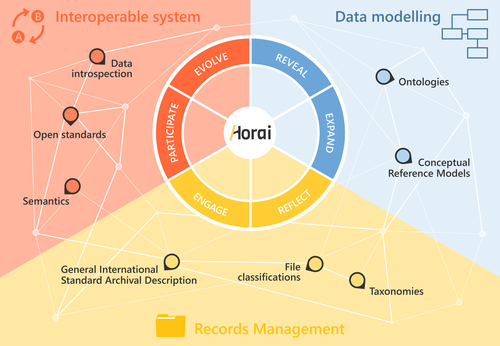
HORAI: An integrated management model for historical informationPablo del Fresno Bernal, Sonia Medina Gordo and Esther Travé Allepuz https://doi.org/10.5281/zenodo.8185510A novel management model for historical informationRecommended by Isto Huvila based on reviews by Leandro Sánchez Zufiaurre and 1 anonymous reviewerThe paper “HORAI: An integrated management model for historical information” presents a novel model for managing historical information. The study draws from an extensive indepth work in historical information management and a multi-disciplinary corpus of research ranging from heritage infrastructure research and practice to information studies and archival management literature. The paper ties into several key debates and discussions in the field showing awareness of the state-of-the-art of data management practice and theory. The authors argue for a new semantic data model HORAI and link it to a four-phase data management lifecycle model. The conceptual work is discussed in relation to three existing information systems partly predating and partly developed from the outset of the HORAI-model. While the paper shows appreciable understanding of the practical and theoretical state-of-the-art and the model has a lot of potential, in its current form it is still somewhat rough on the edges. Many of the both practical and theoretical threads introduced in the text warrant also more indepth consideration and it will be interesting to follow how the work will proceed in the future. For example, the comparison of the HORAI model and the ISAD(G): General International Standard Archival Description standard in the figure 1 is interesting but would require more elaboration. A slightly more thorough copyediting of the text would have also been helpful to make it more approachable. As a whole, in spite of the critique, I find both the paper and the model as valuable contributions to the literature and the practice of managing historical information. The paper reports thorough work, provides a lot of food for thought and several interesting lines of inquiry in the future. ReferencesDel Fresno Bernal, P., Medina Gordo, S. and Travé Allepuz, E. (2024). HORAI: An integrated management model for historical information. CAA 2023, Amsterdam, Netherlands. https://doi.org/10.5281/zenodo.8185510 | HORAI: An integrated management model for historical information | Pablo del Fresno Bernal, Sonia Medina Gordo and Esther Travé Allepuz | <p>The archiving process goes beyond mere data storage, requiring a theoretical, methodological, and conceptual commitment to the sources of information. We present Horai as a semantic-based integration model designed to facilitate the development... |  | Computational archaeology, Spatial analysis | Isto Huvila | 2023-07-26 09:33:58 | View | |
14 Mar 2024
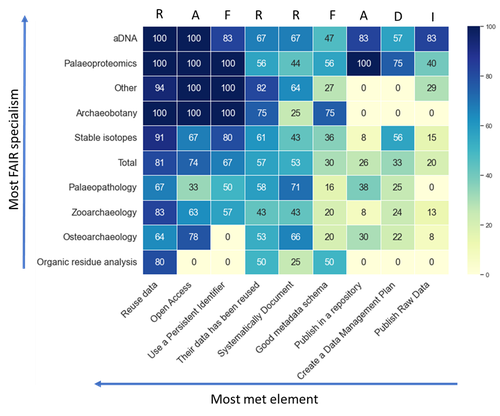
How FAIR is Bioarchaeological Data: with a particular emphasis on making archaeological science data ReusableLien-Talks, Alphaeus https://doi.org/10.5281/zenodo.8139910FAIR data in bioarchaeology - where are we at?Recommended by Claudia Speciale based on reviews by Emma Karoune, Jan Kolar and 2 anonymous reviewers based on reviews by Emma Karoune, Jan Kolar and 2 anonymous reviewers
The increasing reliance on digital and big data in archaeology is pushing the scientific community more and more to reconsider their storing and use [1, 2]. Furthermore, the openness and findability in the way these data are shared represent a key matter for the growth of the discipline, especially in the case of bioarchaeology and archaeological sciences [3]. In this paper, [4] the author presents the result of a survey targeted on UK bioarchaeologists and then extended worldwide. The paper maintains the structure of a report as it was intended for the conference it was part of (CAA 2023, Amsterdam) but it represents the first public outcome of an inquiry on the bioarchaeological scientific community. A reflection on ourselves and our own practices. Are all the disciplines adhering to the same policies? Do any bioarchaeologist use the same protocols and formats? Are there any differences in between the domains? Is the Needs Analysis fulfilling the questions? The results, obtained through an accurate screening to avoid distortions, are creating an intriguing picture on the current state of "fairness" and highlighting how Institutions' rules and policies can and should indicate the correct workflow to follow. In the end, the wide application of the FAIR principles will contribute significantly to the growth of the disciplines and to create an environment where the users are not just contributors, but primary beneficiaries of the system. [1] Huggett j. (2020). Is Big Digital Data Different? Towards a New Archaeological Paradigm, Journal of Field Archaeology, 45:sup1, S8-S17. https://doi.org/10.1080/00934690.2020.1713281 [2] Nicholson C., Kansa S., Gupta N. and Fernandez R. (2023). Will It Ever Be FAIR?: Making Archaeological Data Findable, Accessible, Interoperable, and Reusable. Advances in Archaeological Practice 11 (1): 63-75. https://doi.org/10.1017/aap.2022.40 [3] Plomp E., Stantis C., James H.F., Cheung C., Snoeck C., Kootker L., Kharobi A., Borges C., Reynaga D.K.M., Pospieszny Ł., Fulminante, F., Stevens, R., Alaica, A. K., Becker, A., de Rochefort, X. and Salesse, K. (2022). The IsoArcH initiative: Working towards an open and collaborative isotope data culture in bioarchaeology. Data in brief, 45, p.108595. https://doi.org/10.1016/j.dib.2022.108595 [4] Lien-Talks, A. (2024). How FAIR is Bioarchaeological Data: with a particular emphasis on making archaeological science data Reusable. Zenodo, 8139910, ver. 6 peer-reviewed and recommended by Peer Community in Archaeology. https://doi.org/10.5281/zenodo.8139910 | How FAIR is Bioarchaeological Data: with a particular emphasis on making archaeological science data Reusable | Lien-Talks, Alphaeus | <p>Bioarchaeology, which encompasses the study of ancient DNA, osteoarchaeology, paleopathology, palaeoproteomics, stable isotopes, and zooarchaeology, is generating an ever-increasing volume of data as a result of advancements in molecular biolog... |  | Bioarchaeology, Computational archaeology, Zooarchaeology | Claudia Speciale | 2023-07-12 19:12:44 | View | |
02 Mar 2024
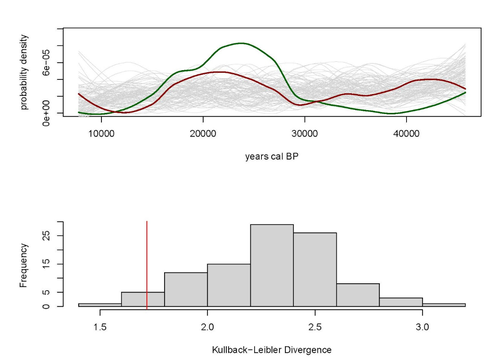
A note on predator-prey dynamics in radiocarbon datasetsNimrod Marom, Uri Wolkowski https://doi.org/10.1101/2023.11.12.566733A new approach to Predator-prey dynamicsRecommended by Ruth Blasco based on reviews by Jesús Rodríguez, Miriam Belmaker and 1 anonymous reviewer based on reviews by Jesús Rodríguez, Miriam Belmaker and 1 anonymous reviewer
Various biological systems have been subjected to mathematical modelling to enhance our understanding of the intricate interactions among different species. Among these models, the predator-prey model holds a significant position. Its relevance stems not only from its application in biology, where it largely governs the coexistence of diverse species in open ecosystems, but also from its utility in other domains. Predator-prey dynamics have long been a focal point in population ecology, yet access to real-world data is confined to relatively brief periods, typically less than a century. Studying predator-prey dynamics over extended periods presents challenges due to the limited availability of population data spanning more than a century. The most extensive dataset is the hare-lynx records from the Hudson Bay Company, documenting a century of fur trade [1]. However, other records are considerably shorter, usually spanning decades [2,3]. This constraint hampers our capacity to investigate predator-prey interactions over centennial or millennial scales. Marom and Wolkowski [4] propose here that leveraging regional radiocarbon databases offers a solution to this challenge, enabling the reconstruction of predator-prey population dynamics over extensive timeframes. To substantiate this proposition, they draw upon examples from Pleistocene Beringia and the Holocene Judean Desert. This approach is highly relevant and might provide insight into ecological processes occurring at a time scale beyond the limits of current ecological datasets. The methodological approach employed in this article proposes that the summed probability distribution (SPD) of predator radiocarbon dates, which reflects changes in population size, will demonstrate either more or less variation than anticipated from random sampling in a homogeneous distribution spanning the same timeframe. A deviation from randomness would imply a covariation between predator and prey populations. This basic hypothesis makes no assumptions about the frequency, mechanism, or cause of predator-prey interactions, as it is assumed that such aspects cannot be adequately tested with the available data. If validated, this hypothesis would offer initial support for the idea that long-term regional radiocarbon data contain signals of predator-prey interactions. This approach could justify the construction of larger datasets to facilitate a more comprehensive exploration of these signal structures.
References [1] Elton, C. and Nicholson, M., 1942. The Ten-Year Cycle in Numbers of the Lynx in Canada. J. Anim. Ecol. 11, 215–244. [2] Gilg, O., Sittler, B. and Hanski, I., 2009. Climate change and cyclic predator-prey population dynamics in the high Arctic. Glob. Chang. Biol. 15, 2634–2652. https://doi.org/10.1111/j.1365-2486.2009.01927.x [3] Vucetich, J.A., Hebblewhite, M., Smith, D.W. and Peterson, R.O., 2011. Predicting prey population dynamics from kill rate, predation rate and predator-prey ratios in three wolf-ungulate systems. J. Anim. Ecol. 80, 1236–1245. https://doi.org/10.1111/j.1365-2656.2011.01855.x [4] Marom, N. and Wolkowski, U. (2024). A note on predator-prey dynamics in radiocarbon datasets, BioRxiv, 566733, ver. 4 peer-reviewed and recommended by Peer Community in Archaeology. https://doi.org/10.1101/2023.11.12.566733 | A note on predator-prey dynamics in radiocarbon datasets | Nimrod Marom, Uri Wolkowski | <p>Predator-prey interactions have been a central theme in population ecology for the past century, but real-world data sets only exist for recent, relatively short (<100 years) time spans. This limits our ability to study centennial/millennial... |  | Bioarchaeology, Environmental archaeology, Palaeontology, Paleoenvironment, Zooarchaeology | Ruth Blasco | 2023-12-12 14:37:22 | View | |
28 Feb 2024
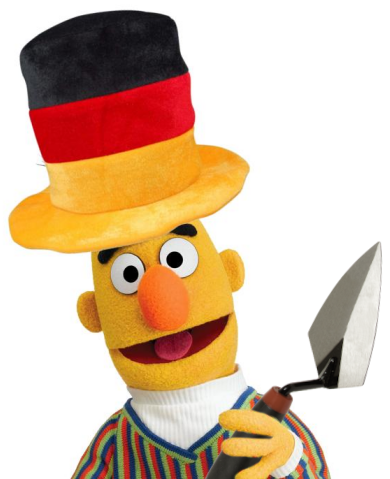
Archaeology specific BERT models for English, German, and DutchAlex Brandsen https://doi.org/10.5281/zenodo.10610882Multilingual Named Entity Recognition in archaeology: an approach based on deep learningRecommended by Maria Pia di Buono based on reviews by Shawn Graham and 2 anonymous reviewers based on reviews by Shawn Graham and 2 anonymous reviewers
Archaeology specific BERT models for English, German, and Dutch” (Brandsen 2024) explores the use of BERT-based models for Named Entity Recognition (NER) in archaeology across three languages: English, German, and Dutch. It introduces six models trained and fine-tuned on archaeological literature, followed by the presentation and evaluation of three models specifically tailored for NER tasks. The focus on multilingualism enhances the applicability of the research, while the meticulous evaluation using standard metrics demonstrates a rigorous methodology. The introduction of NER for extracting concepts from literature is intriguing, while the provision of a method for others to contribute to BERT model pre-training enhances collaborative research efforts. The innovative use of BERT models to contextualize archaeological data is a notable strength, bridging the gap between digitized information and computational models. Additionally, the paper's release of fine-tuned models and consideration of environmental implications add further value. In summary, the paper contributes significantly to the task of NER in archaeology, filling a crucial gap and providing foundational tools for data mining and reevaluating legacy archaeological materials and archives. Reference Brandsen, A. (2024). Archaeology specific BERT models for English, German, and Dutch. Zenodo, 8296920, ver. 5 peer-reviewed and recommended by Peer Community in Archaeology. https://doi.org/10.5281/zenodo.8296920 | Archaeology specific BERT models for English, German, and Dutch | Alex Brandsen | <p>This short paper describes a collection of BERT models for the archaeology domain. We took existing language specific BERT models in English, German, and Dutch, and further pre-trained them with archaeology specific training data. We then took ... |  | Computational archaeology | Maria Pia di Buono | 2023-08-29 14:50:21 | View | |
20 Feb 2024

Understanding Archaeological Site Topography: 3D Archaeology of ArchaeologyWaagen, Jitte & Wijngaarden, Gert Jan van https://doi.org/10.5281/zenodo.10061343Rewriting Archaeological Narratives: Archaeology of Archaeology through 3D Site Topography RecordingRecommended by Devi Taelman based on reviews by Geert Verhoeven, Jesús García-Sánchez and Catherine Scott based on reviews by Geert Verhoeven, Jesús García-Sánchez and Catherine Scott
Even though applications of 3D recording have existed in archaeology for a long time, it is only since the early 2000s that this field of research has become mainstream thanks to technological advances, and the availability of low-cost sensors and image-based modelling software. This has led to significant changes in the way archaeological sites are documented. This paper entitled "Understanding Archaeological Site Topography: 3D Archaeology of Archaeology" by Jitte Waagen & Gert Jan van Wijngaarden (2024) presents an overview of the current developments in the application possibilities of 3D site topography recording in archaeology. The paper is the result of the round table discussion "Understanding Archaeological Site Topography: 3D Archaeology of Archaeology" at the CAA conference on 5 April 2023 in Amsterdam, with contributions from Radu Brunchi, Nicola Lercari, Joep Orbons, Davide Tanasi, Alicia Walsh, Pawel Wolf and Teagan Zoldoske. The paper starts with a discussion of the Amsterdam Troy Project (ATP). In the frame of the ATP, the rich history of archaeological activity (over 150 years of fieldwork) at Troy is being studied to explore how previous archaeological research has helped to shape the current topography of the site and how these earlier research activities, embedded in their contemporary theoretical frameworks, have determined our understanding of the site (see Murray and M. Spriggs 2017, Carver 2011 for the influence of theory on archaeological fieldwork and archaeology as a discipline), the so-called 'Archaeology of Archaeology' approach. In addition to studying previous research records and re-excavating old excavation trenches, a central element of the project is the 3D recording of the past and present topography of the site in order to reconstruct the archaeological research activities at the site and their impact on the archaeological landscape. The paper focuses on current trends in 3D recording of archaeological site topography and discusses three main areas where 3D recording of archaeological site topography can contribute to the "Archaeology of Archaeology" approach: (1) monitoring the topography of sites for preservation, conservation, research and dissemination purposes; (2) reconstructing, reevaluating and reinterpreting past archaeological research efforts; and (3) archiving in a 4D (GIS) environment. This is done using the example of the Amsterdam Troy project and comparing it with other projects using similar methods and approaches. Using these case studies, the authors effectively discuss the impact of these technologies on the understanding of the topography of archaeological sites and how 3D recording can enhance archaeological research methodologies and interpretations, for example, by not using such 3D approaches as a stand-alone product but integrating them with available information from previous research activities. They also recognise the limitations and challenges involved, such as the need for customised data acquisition strategies and the lack of ready-made software solutions for developing comprehensive data management strategies. One topic that could have been covered in more detail is how 3D site topography recording (and 3D recording in general) is affected by current theoretical developments in archaeology. Like any other archaeological fieldwork or data collection approach, it is a child of its time. Decisions such as what to record, how to record, what to store, how to store, what to visualise, and how to visualise influence our understanding of archaeological sites (Ward 2022). This minor critical reflection aside, the paper makes a timely and significant contribution to archaeology by addressing current trends and the limitations of the increasingly widespread use of 3D site topography recording technologies. References Carver, G. (2011). Reflections on the archaeology of archaeological excavation, Archaeological Dialogues 18(1), pp. 18–26. https://doi.org/10.1017/S1380203811000067 Murray, T. and Spriggs, M. (2017). The historiography of archaeology: exploring theory, contingency and rationality, World Archaeology 49(2), pp. 151–157. https://doi.org/10.1080/00438243.2017.1334583 Ward, C. (2022). Excavating the Archive / Archiving the Excavation: Archival Processes and Contexts in Archaeology, Advances in Archaeological Practice 10(2), pp. 160–176. https://doi.org/10.1017/aap.2022.1 Waagen, J. and van Wijngaarden, G.J. (2024). Understanding Archaeological Site Topography: 3D Archaeology of Archaeology, Zenodo, 10061343, ver. 3 peer-reviewed and recommonded by Peer Community in Archaeology. https://doi.org/10.5281/zenodo.10061343 | Understanding Archaeological Site Topography: 3D Archaeology of Archaeology | Waagen, Jitte & Wijngaarden, Gert Jan van | <p>The current ubiquitous use of 3D recording technologies in archaeological fieldwork, for a large part due to the application of budget-friendly (drone) sensors and the availability of many low-cost image-based 3D modelling software packages, ha... |  | Computational archaeology, Remote sensing | Devi Taelman | 2023-10-17 23:03:47 | View |
FOLLOW US
MANAGING BOARD
Alain QUEFFELEC
Nelson ALMEIDA
Johan ARIF
Marta ARZARELLO
Ruth BLASCO
Matthew COLLINS
Otis CRANDELL
Luc DOYON
Alice LEPLONGEON
Florent RIVALS
Aitor RUIZ-REDONDO










